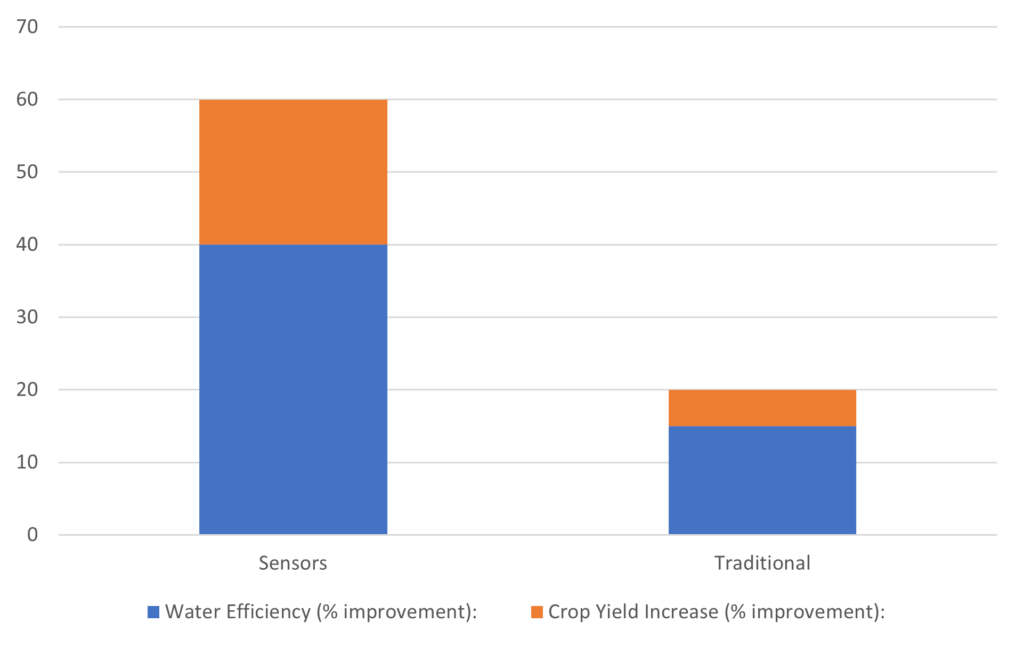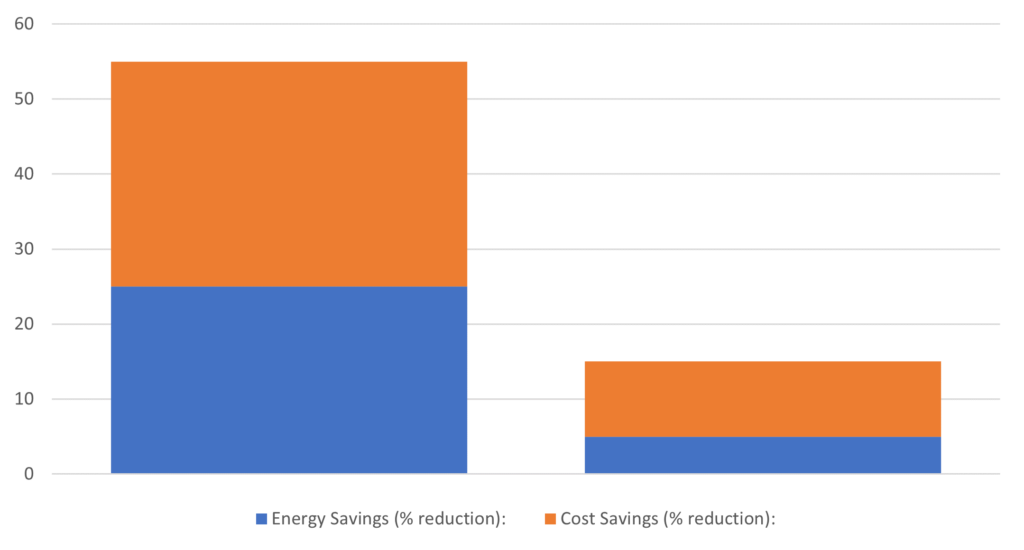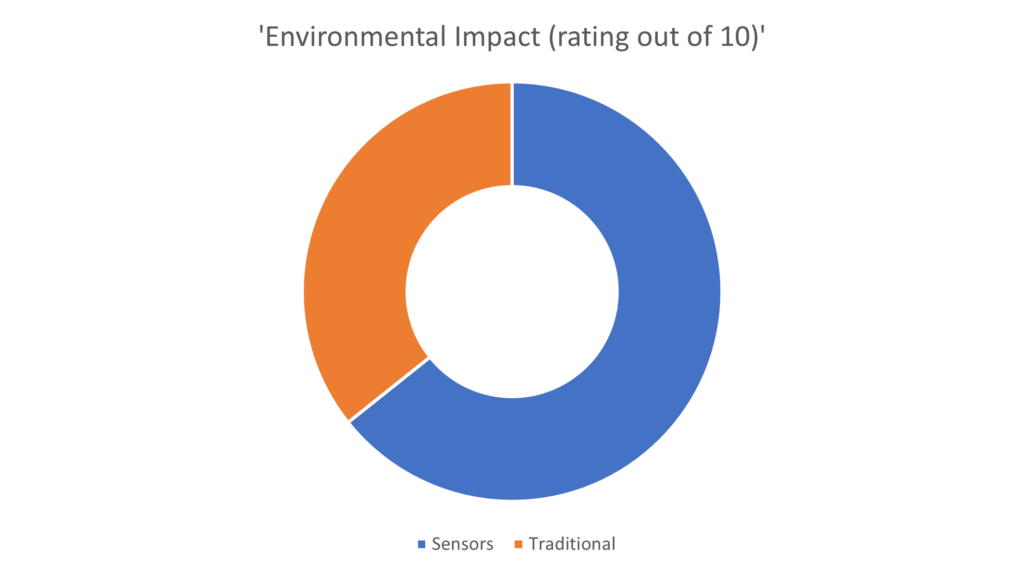Introduction:
Efficient water management is crucial in agriculture, and Smart irrigation systems equipped with advanced sensors have emerged as a powerful solution. These sensors provide real-time data on soil moisture, weather conditions, and crop needs, enabling farmers to decide about irrigation scheduling and water application.
Smart Irrigation:
Smart irrigation involves leveraging advanced technologies and data-driven approaches to optimize agricultural irrigation. It aims to deliver the right amount of water to crops at the right time, based on their needs and environmental conditions. By utilizing sensors, actuators, and algorithms, smart irrigation enables farmers to make informed decisions about irrigation scheduling and water application, improving water-use efficiency, crop health, and sustainability. This precise control over irrigation operations reduces water waste, enhances crop productivity, and promotes environmental conservation. Although there are initial costs and technical challenges, the benefits of Smart irrigation systems make them a valuable investment for modern agriculture.
Real-Time Application of Smart Irrigation Practices:
Smart irrigation systems leverage the data collected from sensors to make real-time decisions about irrigation scheduling and water application. Advanced algorithms analyze the data, considering soil moisture levels, weather conditions, crop characteristics, and historical patterns. Based on this analysis, the system determines the optimal timing, duration, and amount of irrigation required, ensuring efficient water usage.
Comparison between Traditional and Smart Irrigation:
The benefits of using sensors in Smart irrigation systems compared to traditional irrigation methods are significant and can revolutionize how water is managed in agricultural practices.
Here is a detailed comparison of the advantages offered by sensors over traditional irrigation methods:
- Improved Water Efficiency: Sensors: Sensors provide real-time data on soil moisture levels, weather conditions, and crop water requirements, allowing for precise irrigation scheduling and water application. This results in optimized water usage and reduced water waste. Traditional Methods: Traditional irrigation methods often rely on manual observations or predetermined schedules, which can lead to overwatering or underwatering. This inefficiency can result in water wastage and poor water-use efficiency.
- Enhanced Crop Health and Productivity: Sensors: By monitoring soil moisture, weather conditions, and evapotranspiration rates, sensors enable farmers to deliver the right amount of water at the right time, promoting optimal crop health and maximizing yields. Traditional Methods: Traditional irrigation methods may not consider the specific water requirements of different crops or the dynamic environmental conditions. As a result, crops may become more susceptible to pests and diseases and experience water stress.

- Cost Savings: Sensors: Smart irrigation systems with sensors can significantly reduce water and energy expenses. Farmers can minimize water consumption and lower pumping and distribution costs by applying water based on crop needs. Traditional Methods: Traditional irrigation methods often result in overwatering, which wastes water and increases energy costs associated with pumping and distribution.
- Environmental Sustainability: Sensors: With precise control over water application, sensors help conserve water resources, reduce the strain on freshwater supplies, and minimize the environmental impact of agriculture on water sources. Traditional Methods: Traditional irrigation practices, such as flood irrigation or fixed schedules, can lead to excessive water usage, contributing to water scarcity and pollution.

- Real-Time Monitoring and Automation: Sensors: Sensors enable real-time monitoring of soil moisture, weather conditions, and other parameters, allowing for automated irrigation scheduling and remote control. This saves farmers time and effort in manual irrigation management. Traditional Methods: Traditional irrigation methods require manual monitoring and adjustments, which can be time-consuming and labor-intensive. This limits the ability to respond promptly to changing conditions and optimize water usage.
- Data-Driven Decision-Making: Sensors: By collecting and analyzing data on soil moisture, weather patterns, and crop water requirements, sensors provide valuable insights for informed decision-making regarding irrigation practices and resource allocation. Traditional Methods: Traditional methods often rely on intuition and experience rather than data. This can lead to subjective decision-making and suboptimal water management strategies.
Using sensors in Smart irrigation systems offers numerous benefits over traditional irrigation methods. These include improved water efficiency, enhanced crop health and productivity, cost savings, environmental sustainability, real-time monitoring and automation, and data-driven decision-making. By harnessing the power of technology and data, smart irrigation with sensors has the potential to transform agricultural practices, making them more sustainable, efficient, and environmentally friendly.
Sensors: How They Are Used and Why:
Smart irrigation systems utilize various types of sensors to collect essential data for effective water management:
- Soil Moisture Sensors: Soil moisture sensors measure the moisture content in the soil, allowing farmers to monitor soil water availability. This data helps determine when and how much to irrigate, preventing over- or under-watering.
- Weather Sensors: Weather sensors collect data on temperature, humidity, wind speed, and solar radiation. This information enables farmers to adjust irrigation schedules based on current and forecasted weather conditions, ensuring water efficiency.
- Evapotranspiration (ET) Sensors: ET sensors estimate the rate of water loss from crops and soil through evaporation and transpiration. This data helps determine the crop’s water requirements, enabling precise irrigation scheduling.
- Rainfall Sensors: Rainfall sensors detect precipitation events, enabling irrigation systems to adjust their operations accordingly. This prevents unnecessary watering during or after rainfall, reducing water wastage.
- Crop Canopy Sensors: Crop canopy sensors measure parameters such as leaf temperature and canopy density, providing insights into plant health and water stress levels. This data helps optimize irrigation by targeting specific areas or adjusting water application rates.
Implementations and Results with Examples:
A leading irrigation technology company that implements Smart irrigation systems worldwide used soil moisture sensors in vineyards. The sensors continuously monitor soil moisture levels at different depths and transmit the data to the irrigation control system. This allows farmers to precisely schedule irrigation based on plant needs, resulting in optimized water usage, improved grape quality, and reduced water waste.
Another Solution company offers a comprehensive soil monitoring solution using soil moisture and temperature sensors. Farmers can deploy these sensors to monitor soil conditions in real time. The data collected helps farmers make informed decisions about irrigation timing and quantity. Farmers have achieved up to 40% water savings by integrating the system while maintaining or even increasing crop yields, as demonstrated in several case studies.
While another provides an integrated platform for crop monitoring and irrigation management, their system includes soil moisture sensors, weather data, and advanced algorithms. Farmers can access real-time data on soil moisture, temperature, and other parameters through a user-friendly interface. This system has been successfully deployed in various crops, such as corn, wheat, and cotton, resulting in water savings of up to 30% and improved crop productivity.
Also, a manufacturer of irrigation equipment offers a precision soil monitoring system that combines soil moisture sensors and weather data. The sensors collect data on soil moisture levels, while weather data helps determine evapotranspiration rates. This information is integrated into their irrigation control system, allowing farmers to adjust irrigation schedules accordingly. Farmers using this system have reported 20-30% water savings and better crop performance due to optimized irrigation practices.
These real-world examples demonstrate the practical application of sensor-based Smart irrigation systems in diverse agricultural settings. By leveraging these sensors’ data, farmers can make precise irrigation decisions, conserve water resources, and achieve better crop outcomes.
Pro’s and Con’s:
Using the sensors mentioned in the article for Smart irrigation systems offers several advantages and disadvantages.
On the positive side, these sensors provide real-time data on crucial parameters such as soil moisture levels, weather conditions, evapotranspiration rates, and crop health, allowing for precise irrigation management. This leads to improved water efficiency, as farmers can deliver the right amount of water to crops at the right time, reducing water waste and optimizing irrigation practices. Additionally, sensor-based systems enhance crop health and productivity by preventing overwatering or underwatering, promoting optimal growth conditions and higher yields. They also contribute to cost savings by reducing water and energy expenses associated with irrigation.
However, there are some drawbacks to consider. Implementing sensor-based systems requires an initial investment in sensors, controllers, and communication networks, which can be costly. Farmers must also understand sensor operation and data analysis well to utilize the collected data effectively. Regular maintenance and calibration of the sensors are essential to ensure accurate and reliable readings. Despite these challenges, the benefits of using sensors in Smart irrigation, including water conservation, improved crop performance, and cost savings, make them a valuable tool for modern agriculture.
Maximizing Savings and Sustainability:
The cost efficiency of sensors in Smart irrigation systems is an essential consideration for farmers. While the initial investment in sensors and related equipment may seem significant, the long-term benefits and cost savings outweigh the upfront costs.
Here are some key points regarding the cost efficiency of sensors:
- Water Savings: Sensors enable precise irrigation scheduling based on real-time data, ensuring water is applied only when and where it is needed. This leads to significant water savings, reducing water usage and associated costs.
- Energy Savings: Sensors also contribute to energy savings by optimizing water usage. Water pumps and distribution systems operate more efficiently when delivering the right amount of water, reducing energy consumption and lowering electricity costs.
- Reduced Labor Costs: With automated monitoring and control, sensors eliminate the need for manual tracking and adjustments, saving labor costs. Farmers can remotely manage irrigation systems, reducing the time and effort required for irrigation management.
- Improved Crop Yield: By maximizing irrigation techniques, sensors ensure crops get the proper amount of water at the right time. This leads to improved crop health, increased yields, and higher profitability.
- Avoidance of Water-related Expenses: By preventing overwatering or underwatering, sensors help avoid costs associated with water-related issues, such as waterlogging, erosion, and nutrient leaching. This results in savings on fertilizers, soil amendments, and potential crop losses.
- Longevity and Reliability: While sensors require maintenance and occasional calibration, they are designed to be durable and reliable. Once deployed, they can deliver precise data in a considerable amount of time, lowering the need for frequent replacements or repairs.
While the cost efficiency of sensors depends on factors such as farm size, crop type, and local conditions, the potential savings in water, energy, labor, and crop-related expenses make them a worthwhile investment. Farmers can experience significant financial benefits over time, driving the adoption of sensor-based Smart irrigation systems economically viable and advantageous for sustainable agricultural practices.

Conclusion:
Sensors are crucial in optimizing irrigation practices and reducing water waste in agriculture. Smart irrigation systems, powered by real-time data from soil moisture, weather, ET, rainfall, and crop canopy sensors, enable farmers to make informed decisions about irrigation scheduling and water application. By implementing these technologies, farmers can achieve significant water savings, improve crop yield and quality, and contribute to sustainable farming practices. Despite initial costs and technical challenges, the benefits of Smart irrigation systems make them a valuable investment for modern agriculture.



